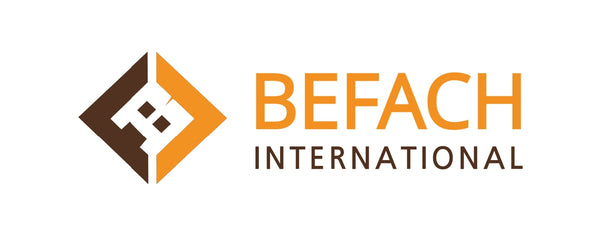
Decoding the Code: A Guide to Container Markings (Size, Type, and Code)
Share
They are the workhorses of global trade—the millions of steel boxes stacked at ports and sailing across oceans. But have you ever looked closely at a shipping container and wondered what the string of letters and numbers painted on its side actually means?
This isn't random graffiti; it's a highly standardized marking system, and it's the key to your shipment's identity. Understanding this "language" is fundamental to logistics. At Befach.com, we manage these details every day to ensure your goods are tracked and transported accurately. This guide will decode the system for you.
The Main Identifier: The Container Number (ISO 6346)
The main sequence of 4 letters and 7 numbers is the container's unique "license plate," governed by the international standard ISO 6346. It's broken down into four parts:
Example: MSCU 378214 4
- Owner Code (BIC Code): The first three letters (e.g., MSCU) identify the owner of the container, in this case, Mediterranean Shipping Company (MSC). This code is registered with the Bureau International des Containers (BIC).
-
Equipment Category Identifier: The fourth letter (e.g., U) specifies the type of equipment.
- U: For all freight containers.
- J: For detachable container-related equipment.
- Z: For trailers and chassis.
- Serial Number: The next six numbers (e.g., 378214) are the unique registration number for that container, assigned by the owner.
- Check Digit: The final single number (e.g., 4) is a crucial security feature. It's calculated using a complex formula based on all the previous letters and numbers. It's used to verify that the entire container number is accurate and hasn't been mistyped, preventing costly tracking errors.
The Size and Type Code
Below the main container number, you'll often see a 4-character code. This code provides specific details about the container's dimensions and type.
- First Character: Represents the container's length (e.g., 2 for 20ft, 4 for 40ft).
- Second Character: Represents the container's height and width.
- Third & Fourth Characters: Specify the container type.
Common Examples:
- 22G1: A standard 20-foot general-purpose container.
- 45G1: A 40-foot High Cube (extra height) general-purpose container.
- 22R1: A 20-foot refrigerated container (reefer).
Why This Matters for Your Import Business
While you don't need to memorize these codes, understanding their purpose is key.
- Accurate Tracking: Our logistics team uses this unique number to track your shipment's journey across the globe in real-time.
- Documentation Integrity: The container number on your Bill of Lading must exactly match the number on the physical container. Any discrepancy will cause major red flags during customs clearance.
- Customs Compliance: Indian Customs authorities (the CBIC) use these markings to verify that the goods arriving are the same ones declared in the import documents, as per policies set by the DGFT.
Our job is to manage these technical details so you don't have to. From sourcing your product to final delivery, we ensure every detail is aligned for a smooth process.
Focus on What's Inside the Box, Not the Codes On It
Let the experts handle the complexities of logistics and markings. With Befach, you can have peace of mind knowing that every detail of your shipment is being professionally managed.
Ready to experience a seamless and transparent import process? Contact the Befach team today.
